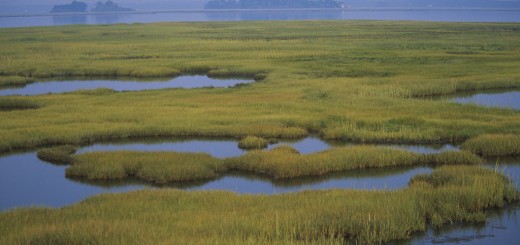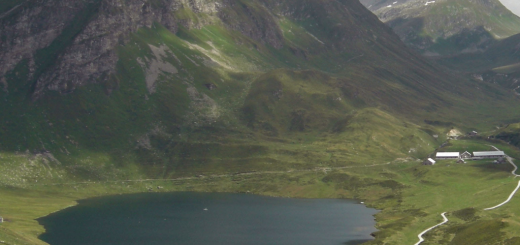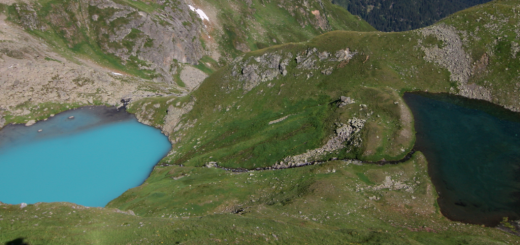Research Summary: Dreissenid Mussel Impacts On Plankton Dynamics In Western Lake Erie
0A Department of Natural Sciences, University of Maryland Eastern Shore, Princess Anne, MD, USA
B Aquatic Ecology Laboratory, Department of Evolution, Ecology and Organismal Biology, The Ohio State University, Columbus, OH, USA
C National Oceanic and Atmospheric Administration Great Lakes Environmental Research Laboratory, Ann Arbor, MI, USA
D Department of Biology, Central Michigan University, Mount Pleasant, MI, USA
The ability to describe the distribution and dynamics of plankton communities can benefit both our understanding and management of aquatic ecosystems. For example, indices of plankton community composition and dynamics have been used to track environmental changes in both freshwater and marine ecosystems, as well as assess ecosystem health (e.g., Allinger and Reavie, 2013; Lugoli et al., 2012). Likewise, because higher consumers such as fish depend on plankton as prey during one or more life stages, long-term fisheries dynamics have been linked to shifts in the plankton community (e.g., Beaugrand et al., 2003).
However, reliably describing plankton dynamics has remained elusive in many ecosystems, largely due to numerous biophysical factors operating directly and indirectly on plankton growth, survival, and reproduction (Daly and Smith, 1993; Folt and Burns, 1999). In the North American Great Lakes, understanding spatiotemporal variation in plankton dynamics has been especially elusive in recent decades, owing to the impacts of invasive zebra (Dreissena polymorpha) and quagga (D. bugensis) mussels. While we have come to learn that the strong filtration capacity of Dreissena spp. has decoupled lake production from phosphorus input in the Great Lakes (Conroy et al., 2005), we still do not know if dreissenid mussels have had a net negative effect on plankton production via direct filtration (Barbiero et al., 2006) or a net positive effect through nutrient excretion (Hecky et al., 2004) (Figure 1). Herein, we used a biophysical model to address this information gap in western Lake Erie, a system that has supported large dreissenid populations since the late 1980s and also provides valuable nursery areas for the planktivorous larvae of many ecologically and economically important fishes (e.g., walleye, Sander vitreum; yellow perch, Perca flavescens).

Figure 1. Conceptual diagram of mussel puzzle in western Lake Erie. Pathways 1 and 2 respectively indicate a negative and positive effect on plankton production. (Credit: Meng Xia)
Methods
We used the offline linked Finite Volume Coastal Ocean Model-Integrated Compartment Model (FVCOM-ICM) to simulate the biogeochemical kinetics of western Lake Erie in three dimensions at a fine spatial (grid resolution ranged 17 m to 7.8 km; Figure 2). The ICM eutrophication/water quality model, which simulated nutrients, phytoplankton and zooplankton among other ecosystem components, used the hydrodynamic outputs (e.g., current velocity, temperature, water elevation) of FVCOM. A modified suspension feeder module was applied to simulate filtration by both dreissenid species.
After establishing that our model could adequately capture the observed plankton blooms for 8 years (1995, 1996, and 2002-2007), we conducted a series of modeling “experiments” in which we looked at how phytoplankton biomass responded when dreissenid mussel ranged 0% to 200% of its current biomass.

Figure 2. Model grid structure and bathymetry (m) of Lake Erie. The triangular unstructured grid (8,721 nodes; 15,578 elements) has a high resolution in nearshore areas of the western basin (study focal area) and a coarser resolution in the central and eastern basins. The white line along the southern shore in the western basin denotes a transect used to track changes in plankton. (Credit: Meng Xia)
Results and Conclusions
Plankton biomass decreased notably with increasing dreissenid biomass during our modeled time period. This notion is best exemplified by the dynamics of green algae, a major group of phytoplankton in Lake Erie. Specifically, we found that after the removal of dreissenid mussels in our model, the overall green algae biomass increased up to 0.05 mg C/L across a 60 km transect located along the productive southern shore of western Lake Erie (Figures. 2 and 3c). During the phytoplankton bloom period, mussels grazed heavily on green algae (up to 0.2 mg C/L; Figure 3a) when nutrient limitation was not severe. Further, due to the shallow depth (7.4 m on average) and weak stratification of western Lake Erie in spring, the filtration effect could dominate the whole water column (Figure 3a). Nonetheless, Dreissena spp. also showed the potential to support the growth of green algae through the release of inorganic nitrogen and phosphorus, especially when nutrients were limiting in summer (Figure 3b; Pathway 2 in Figure 1).

Figure 3. Representative changes in green algae biomass on a transect of western Lake Erie (see Figure 2) on (a) 28 May 1996 and (b) 14 July 1996; and (c) daily average changes of the model period (15 March 1996–31 July 1996): no mussel added in the model compared to the mussel biomass at the realistic level. A positive value implies biomass increased without mussels. (Credit: Meng Xia)
Ultimately, our modeling results support the notion that both mussel-induced stimulation (Pathway 1) and suppression (Pathway 2) of algal production occurred in western Lake Erie, and their relative strength depended on nutrient concentration and phytoplankton abundance. However, throughout the spring and early summer, dreissenid mussels caused a net reduction in plankton biomass.
Full study published in Ecological Modeling, July 2015.
Selected References
- Allinger, L.E., Reavie, E.D., 2013. The ecological history of Lake Erie as recorded by the phytoplankton community. J. Great Lakes Res. 39 (3), 365–382.
- Barbiero, R.P., Rockwell, D.C., Warren, G.J., Tuchman, M.L., 2006. Changes in spring phytoplankton communities and nutrient dynamics in the eastern basin of Lake Erie since the invasion of Dreissena Can. J. Fish. Aquat. Sci. 63 (7), 1549–1563.
- Beaugrand, G., Brander, K.M., Lindley, J.A., Souissi, S., Reid, P.C. 2003. Plankton effect on cod recruitment in the North Sea. Nature, 426(6967), 661-664.
- Conroy, J.D., Kane, D.D., Dolan, D.M., Edwards, W.J., Charlton, M.N., Culver, D.A., 2005. Temporal trends in Lake Erie plankton biomass: roles of external phosphorus loading and dreissenid mussels. J. Great Lakes Res. 31 (Suppl. 2), 89–110.
- Daly, K.L., Smith, W.O. 1993. Physical-biological interactions influencing marine plankton production. Ann. Rev. Ecol. System. 24, 555-585.
- Folt, C.L., Burns, C.W. 1999. Biological drivers of zooplankton patchiness. Trends Ecol. Evol. 14(8), 300-305.
- Hecky, R.E., Smith, R.E., Barton, D.R., Guildford, S.J., Taylor, W.D., Charlton, M.N., Howell, T., 2004. The nearshore phosphorus shunt: a consequence of ecosystem engineering by dreissenids in the Laurentian Great Lakes. Can. J. Fish. Aquat. Sci. 61 (7), 1285–1293.
- Lugoli, F., Garmendia, M., Lehtinen, S., Kauppila, P., Moncheva, S., Revilla, M., Roselli, L., Slabakova, N., Valencia, V., Dromph, K.M., Basset, A. 2012. Application of a new multi-metric phytoplankton index to the assessment of ecological status in marine and transitional waters. Ecol. Indicators, 23, 918 338-355.
Featured Image: Lake Erie’s western basin as seen from space, August 1, 2014. (Credit: NASA Earth Observatory)













